On June 5, 2024, Coinbase launched its smart wallets campaign, marking a "new era" in crypto wallets by simplifying onboarding, eliminating network fees, and removing recovery phrases. In light of this, we’re diving into Base, Coinbase's rapidly growing Layer 2 (L2) blockchain. Despite being less than a year old, Base has seen impressive growth due to factors like reduced transaction fees, the meme coin craze, and the growing popularity of Farcaster. Transactions have increased ninefold, and user numbers have quadrupled. Unlike other projects, Base focuses on consumer-oriented applications.
The Genesis
In a blog post dated September 7, 2016, CEO Brian Armstrong outlined Coinbase's "Secret Master Plan" which envisions the evolution of the digital currency industry through four major phases:
Phase 1: Develop the Protocol (1M people) Bitcoin and Ethereum were created, with open source communities forming around them. Coinbase supported these communities but did not play a major role.
Phase 2: Build a Digital Currency Exchange (10M people) Coinbase built user-friendly exchanges for consumers and institutions, generating revenue to fund future developments and global expansion.
Phase 3: Build a Mass Market Interface for Digital Currency Apps (100M people) The goal is to create an easy-to-use interface for digital currency applications, similar to web browsers for the internet. Coinbase will build or invest in solutions to lower barriers for new applications.
Phase 4: Build the Apps of an Open Financial System (1B people) Recreate the financial system on open networks, making it globally accessible. Key applications include loans, investing, identity, remittance, and merchant processing. Coinbase will build, buy, or invest in these solutions and work with regulators.

Base was created by Jesse Pollak (x.com/jessepollak), the Head of Protocols at Coinbase. Since its launch on July 13, 2023, aims to onboard 1 billion users to the blockchain, reflecting Coinbase's vision of an open economic system powered by crypto. Initially, Base’s team experimented with various on-chain services but recognized the need for better infrastructure and user-friendly tools. This realization led to the creation of Base, a Layer 2 blockchain built on the OP Stack in collaboration with OP Labs. Base has three main goals:
Improving user access: Lowering barriers for average users to utilize on-chain services.
Supporting developers: Providing tools and frameworks to make on-chain development more accessible.
Expanding Coinbase's services: Leveraging Base to grow Coinbase's on-chain service offerings.
Notably, on December 1, 2023, Coinbase CEO Brian Armstrong stated that Base will not have its own token.
Base is an Ethereum Layer 2 chain utilizing the OP Stack. The choice of Ethereum was due to its user and developer adoption, while the Layer 2 solution provided scalability and low transaction fees. Optimism's decentralized governance structure also influenced Base's collaboration with OP Labs. Coinbase aims to transition from a centralized role to a more decentralized governance model, ensuring trust and safety for users and developers. The collaboration with OP Labs extends beyond chain building to ongoing research and governance participation, exemplified by joint efforts on EIP-4844 and the op-geth client.
Comparative Analysis of L2 Blockchains
On Mar. 13, Ethereum launched "Blobs," a major Layer 2 upgrade, reducing data availability costs by over 98%. This allows Layer 2s to lower transaction fees, often bringing median fees below 1 cent.
Key Base Metrics:
TVL Breakdown
Financial Analysis
From January to May 2024, Base, experienced significant financial fluctuations.
In January, revenue and fees were $2.03 million, decreasing by 18.3% from December 2023. February saw a substantial recovery with revenue increasing to $4.75 million, up 133.5%. March marked a peak with revenue reaching $20.52 million, a 332.1% increase, likely due to a major event or seasonal high. However, in April, revenue dropped to $12.58 million, a 38.7% decrease, and further declined in May to $7.00 million, down 44.3%.
Expenses followed a similar trend. January's expenses were $1.62 million, decreasing by 24.4% from December. February's expenses rose to $3.90 million, up 140.9%, and peaked in March at $6.34 million, a 62.3% increase. Expenses then fell to $2.09 million in April, a 67.0% decrease, and further decreased to $978.01k in May, down 53.2%.
Gross profit and earnings mirrored these trends. January's gross profit was $413.57k, increasing by 19.2%. February saw a further increase to $846.05k, up 104.6%. March peaked at $14.19 million, a 1,576.7% increase, followed by a decline to $10.49 million in April, down 26.0%, and further to $6.02 million in May, a 42.6% decrease.
Social & Community
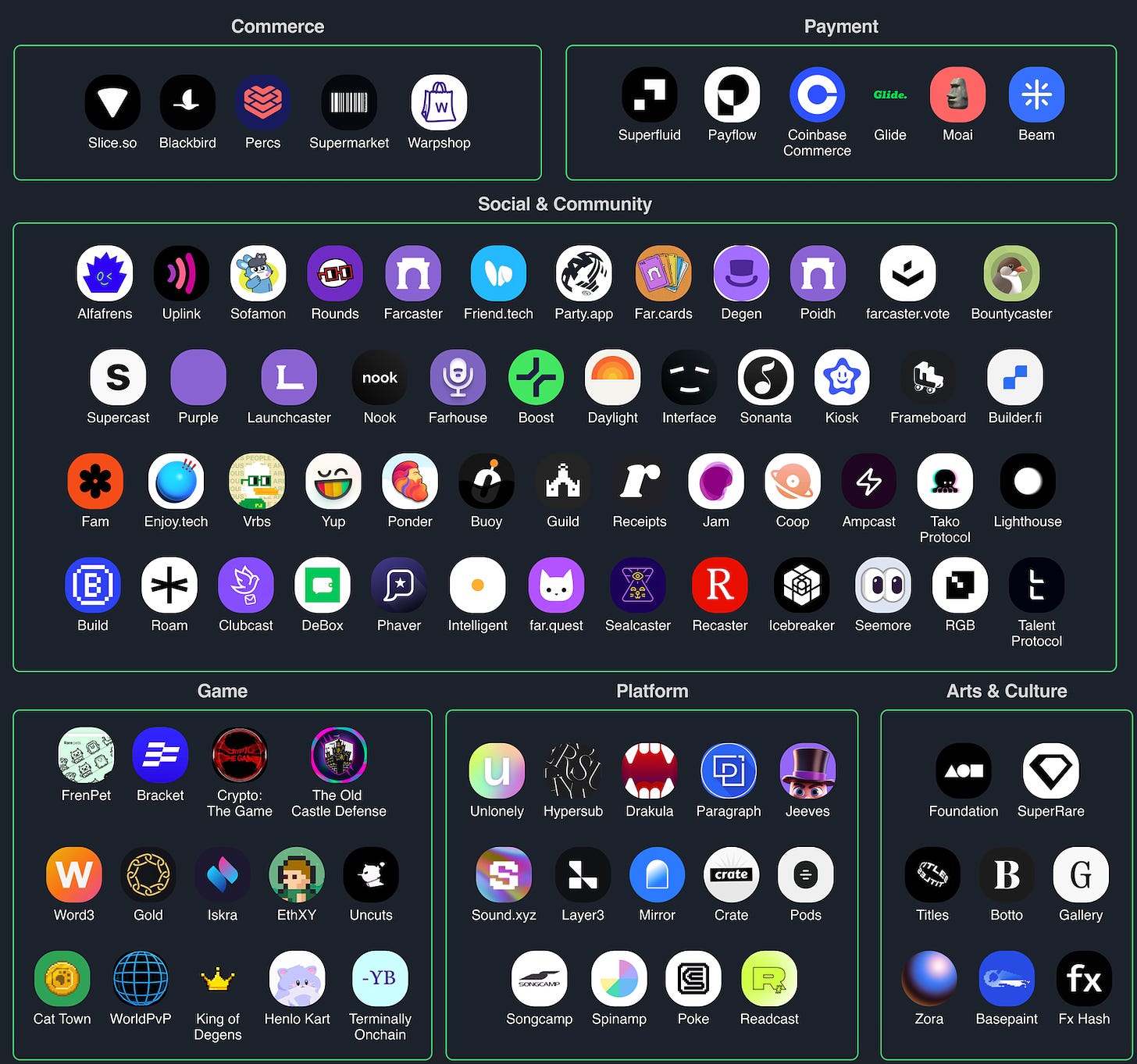
Social and community applications are core to Base and Farcaster's growth in the consumer application space. These applications bootstrap early users and create ongoing demand for interactions and transactions. Notable successes include Friend.tech and Farcaster, which have significantly impacted early user inflow.
Key Characteristics:
Interoperability: On-chain applications share user data and social graphs, offering interconnected experiences across multiple services. For example, Farcaster clients can interact seamlessly with each other.
Memecoin GTM Strategies: Memecoins, despite their volatility, effectively attract initial users and promote services. Tokens like DEGEN have incentivized community activities on Farcaster.
Gamified Social Networking: New token distribution strategies rooted in community contribution and game theory encourage user engagement and competition.
Major Projects (All three listed below were discussed in our previous post):
Farcaster: A decentralized social network protocol allowing open development of clients. Features like Frames enhance user engagement and interoperability.
Degen: An ERC-20 token central to Farcaster's community, incentivizing engagement and content creation through tipping and community activities.
Friend Tech: A social trading app allowing users to buy and sell 'Keys' to join private group chats, pioneering the SocialFi genre.
Notable Projects:
AlfaFrens: A SocialFi app allowing users to subscribe to influencers for access to exclusive chat rooms, using Degen as its primary currency.
Interface: A social platform displaying wallet activities in a feed format, enhancing user interaction and utility of on-chain social graphs.
Kiosk: A Farcaster client combining social networking with commerce, allowing users to easily convert images into NFTs and buy assets directly from their feed.
Content Platforms
Base's ecosystem supports various content platforms, especially around Farcaster, where community activities are concentrated. As on-chain social graphs grow, demand for platforms tailored to different content types, such as essays, videos, and live streaming, is rising.
Key Characteristics:
Interoperability: Content platforms provide a seamless user experience across multiple applications based on shared protocols.
Token-Based Interactions: Tokens are used to enhance content interaction, such as minting articles as NFTs and forming exclusive communities.
Creator Rewards: Creators receive strong economic incentives, fostering active engagement with their fans or community.
Major Projects:
Unlonely: An on-chain live streaming platform blending Web2 and Web3 elements, incorporating gamified features to enhance viewer engagement.
Paragraph: An on-chain newsletter and publishing platform enabling content creators to mint their work as NFTs and build communities.
Notable Projects:
Drakula: An on-chain shorts platform similar to TikTok, allowing users to trade content creators' tokens and earn rewards through content creation and sharing.
Sound.xyz: A music NFT platform enabling fans to own tracks and support artists, fostering closer connections through exclusive perks.
Gaming
While gaming in Web3 has yet to see widespread success, Base supports a few notable projects focusing on user interaction and community engagement. Games in the Base ecosystem range from simple mechanics with token economics to more traditional gaming experiences.
Major Projects:
FrenPet: An on-chain game where players raise virtual pets, involving constant interaction and earning points through gameplay.
Iskra: A Web3 gaming platform offering intuitive games and engaging programs like Quest Wall and Iskra Arcade.
Notable Projects:
Uncut: A social card trading game based on Farcaster profiles, allowing users to form teams and earn commissions through trading.
World PvP: A social trading game where countries compete based on market cap, incorporating chat features and strategic gameplay.
Commerce & Lifestyle
Crypto-based payments offer advantages over traditional systems, including lower costs and faster transactions. However, user adoption remains low due to poor user experiences and platform-specific complexities.
Major Projects:
Coinbase Commerce: A solution for on-chain payments, allowing merchants to settle in their preferred tokens and offering cheaper transaction fees.
Blackbird: A loyalty and membership platform for restaurants, issuing memberships as NFTs and providing various rewards and benefits.
Notable Projects:
Slice.so: A platform for issuing and selling on-chain products, including event tickets and merchandise, enhancing the on-chain commerce experience with features like revenue sharing and NFT issuance.
Smart Wallet
Coinbase has officially launched its new "smart wallet" on June 5, 2024, designed to simplify the crypto experience by easing onboarding and enabling gasless transactions. Initially unveiled at EthDenver in February, the wallet offers user-friendly setup options, including Face ID, Google Chrome profiles, fingerprint, and Yubikey, eliminating the need for recovery phrases. Key features include leveraging self-custodial or Coinbase account balances to avoid insufficient fund errors and allowing developers to sponsor transactions via paymaster integrations. Supporting eight networks—Base, Ethereum, Optimism, Arbitrum, Polygon, Avalanche, BNB, and Zora—the wallet is set to expand further, enhancing accessibility and ease of use for all users.
Conclusion
Coinbase's launch of its smart wallets campaign and the rapid growth of its Layer 2 blockchain, Base, signify significant strides in making blockchain technology more accessible and user-friendly. Base's impressive metrics, driven by reduced on March 13 transaction fees highlight its potential in fostering a broader adoption of decentralized finance. Despite having over 10 million users, leading applications built on Base have relatively low engagement rates. Farcaster sees around 60,000 daily active users, while the leading gaming app FrenPet has only a few thousand, indicating the early stages of adoption. By focusing on ease of use, developer support, and expanding on-chain services without creating a new token, Coinbase is strategically positioning itself to lead in the evolving landscape of digital finance.
Links
Sources
https://tokenterminal.com/terminal/financial-statements/base
https://www.coinbase.com/blog/the-coinbase-secret-master-plan
Risk Disclaimer:
insights4.vc and its newsletter provide research and information for educational purposes only and should not be taken as any form of professional advice. We do not advocate for any investment actions, including buying, selling, or holding digital assets.
The content reflects only the writer's views and not financial advice. Please conduct your own due diligence before engaging with cryptocurrencies, DeFi, NFTs, Web 3 or related technologies, as they carry high risks and values can fluctuate significantly.







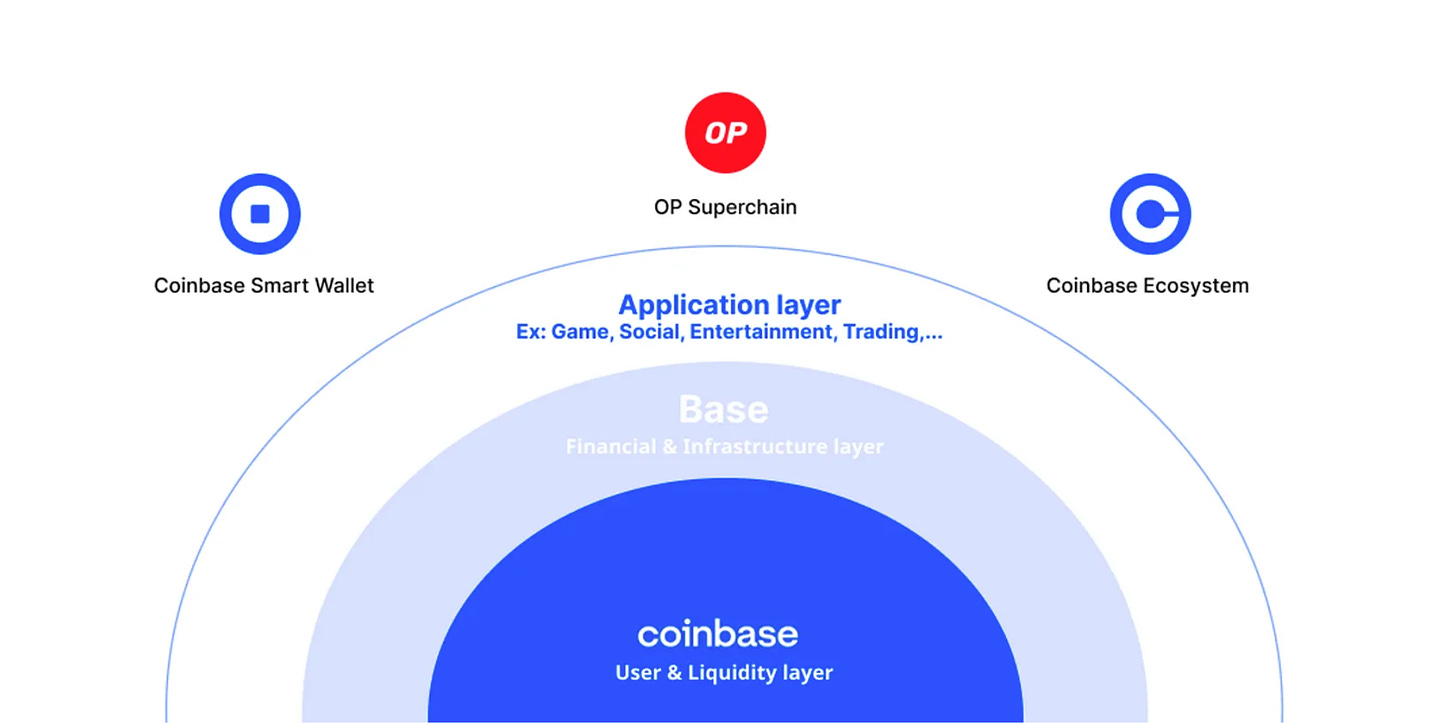

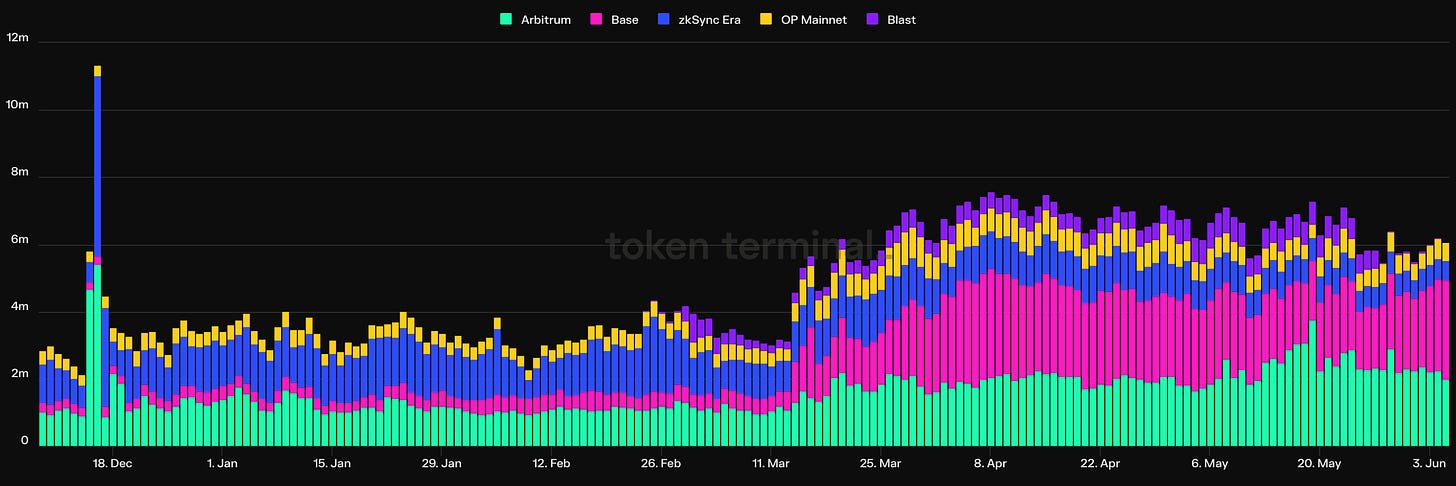

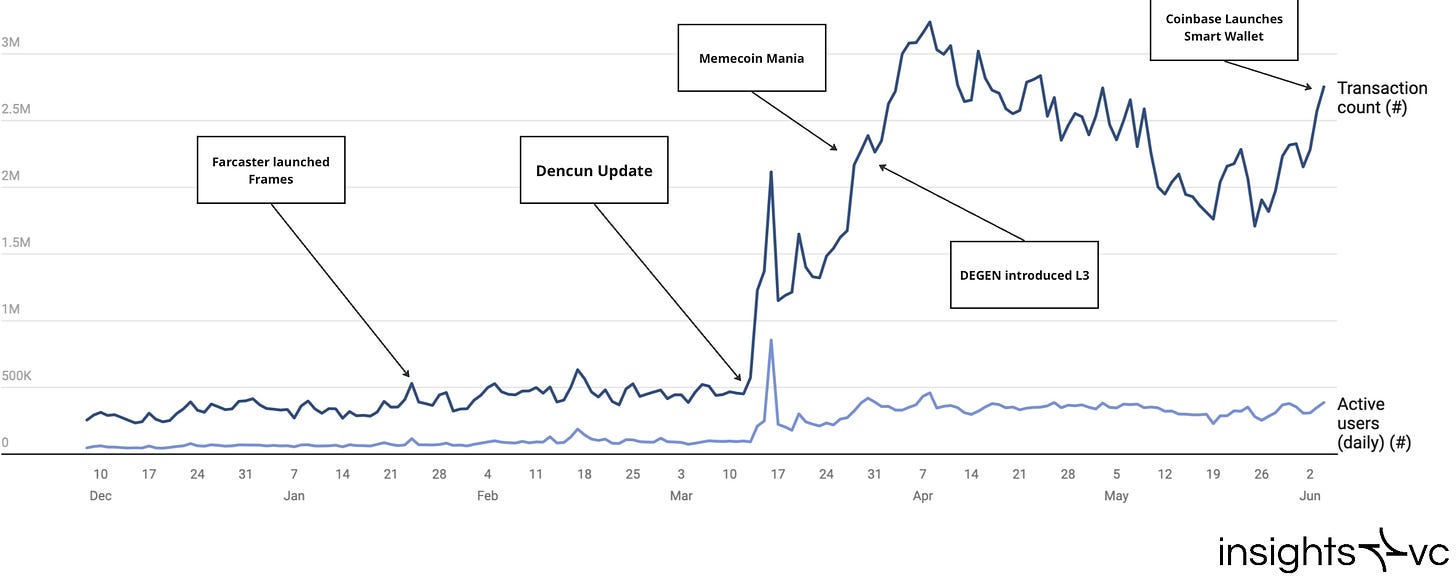


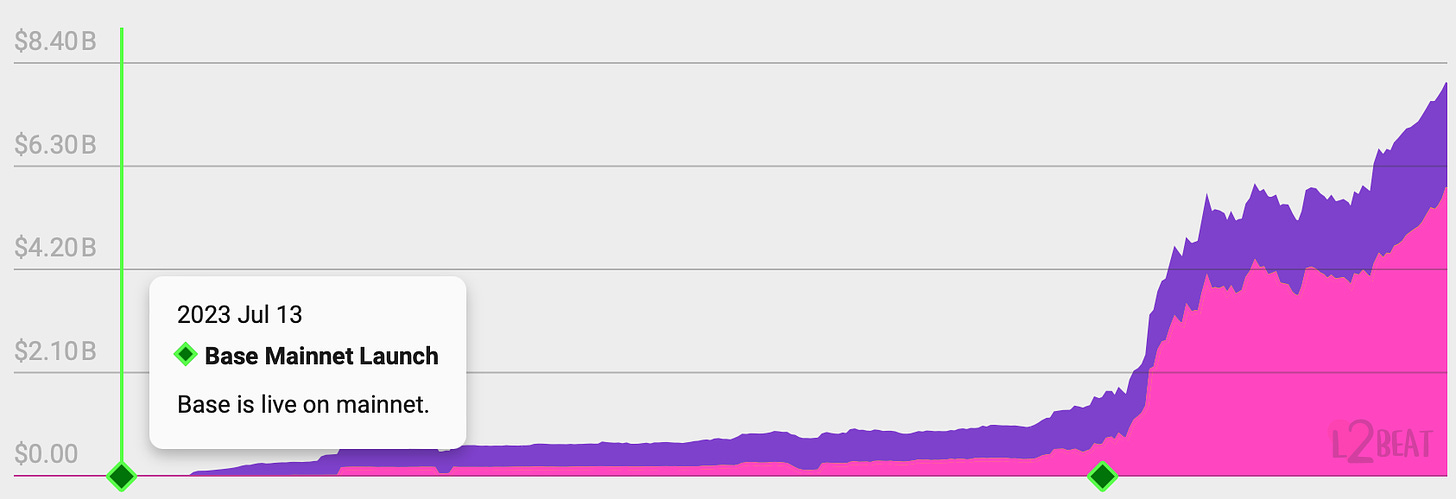
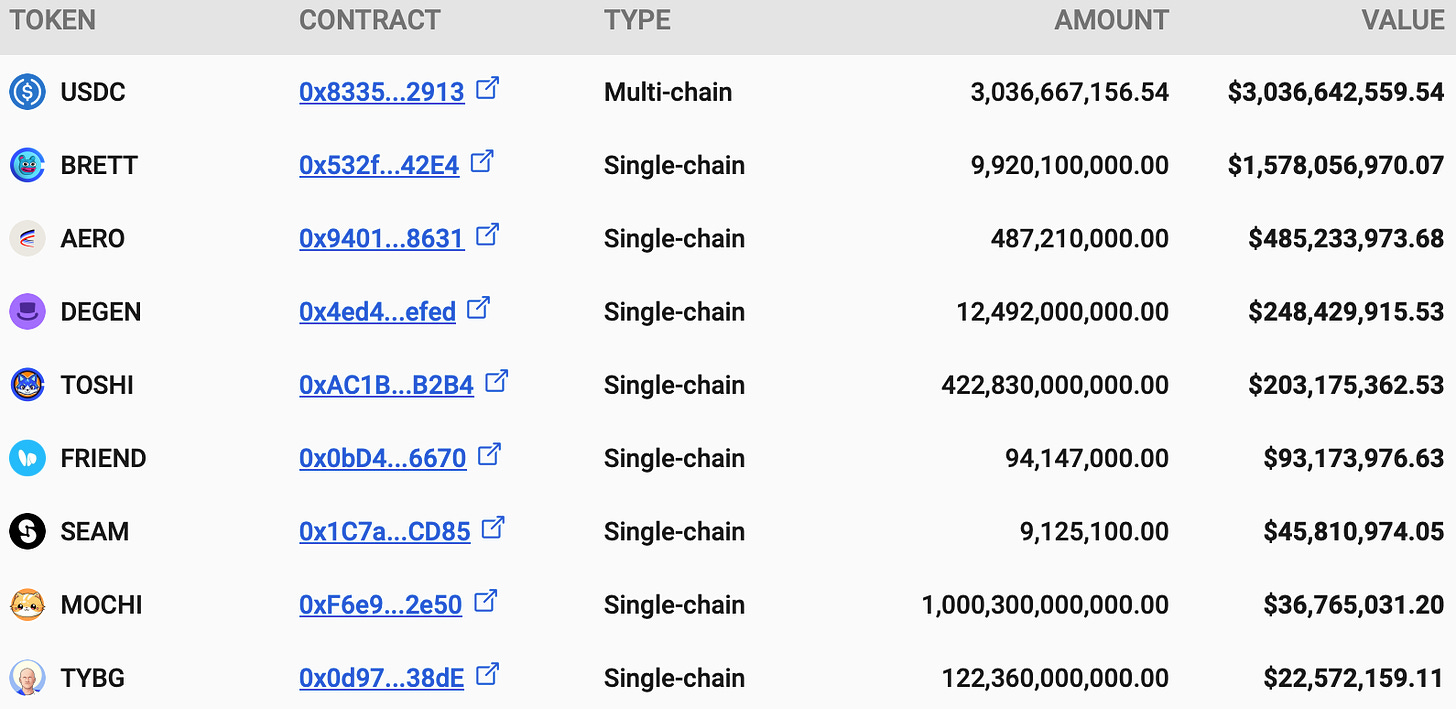

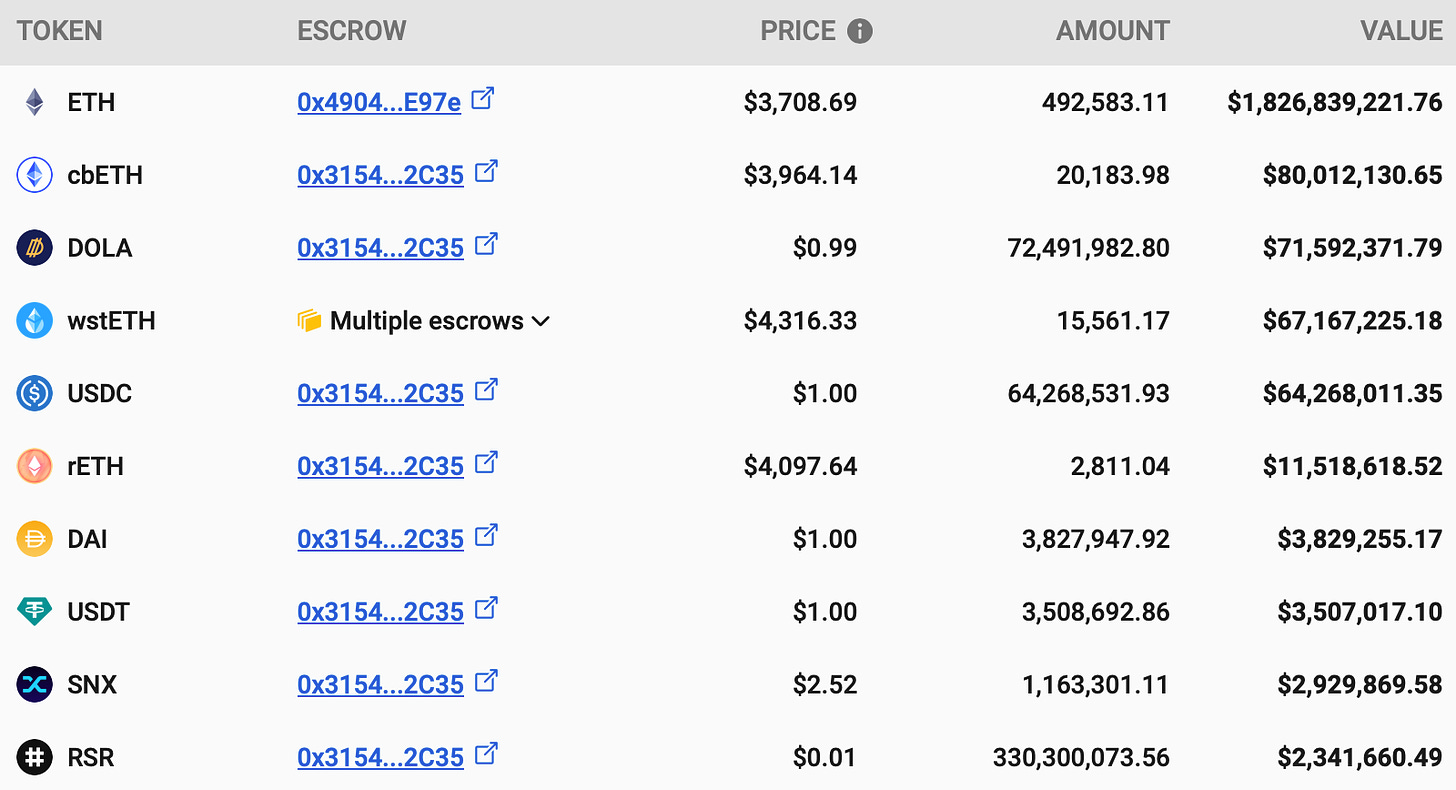



Coinbase's new smart wallet is a game-changer for user experience. However, further innovations are needed to achieve widespread adoption.